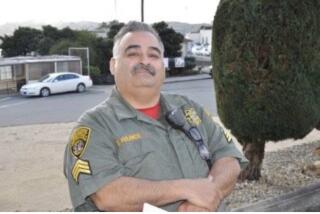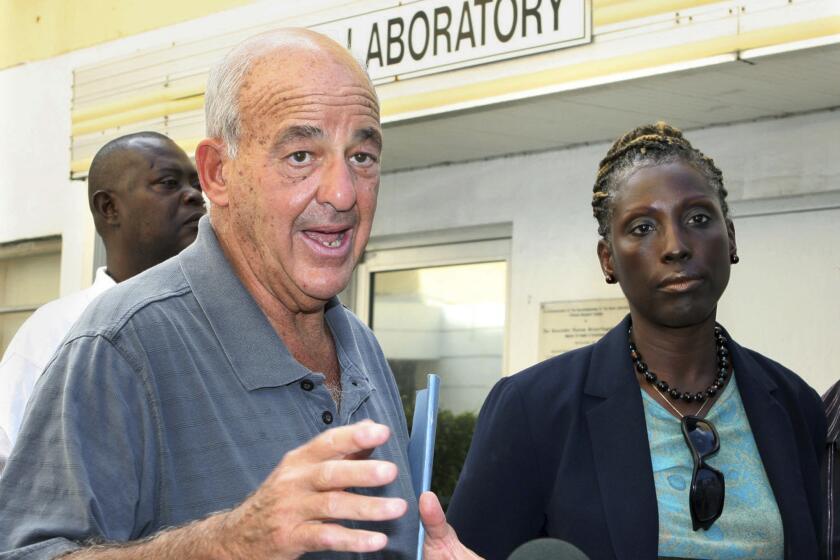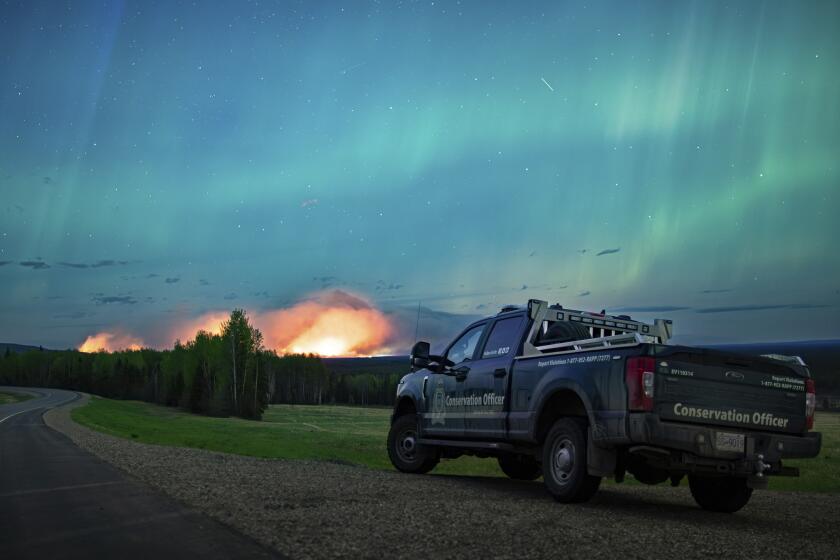Ground Troops Join Move Toward Gulf
The Army began moving ground troops to within striking distance of Afghanistan on Thursday as a massive deployment of warplanes, ships, equipment and personnel moved into its second day.
Army Secretary Thomas E. White, the Army’s top civilian official, said it is “ready to conduct sustained land combat operations” in the Persian Gulf region. He said the deployment of special operations forces, light infantry and other troops was only the first step in a broader military campaign that will unfold in coming weeks.
For the record:
12:00 a.m. Sept. 22, 2001 FOR THE RECORD
Los Angeles Times Saturday September 22, 2001 Home Edition Part A Part A Page 2 Zones Desk 1 inches; 16 words Type of Material: Correction
Aircraft carrier--A graphic that ran Friday showed an out-of-date silhouette of the Enterprise aircraft carrier.
American casualties, he said, are likely.
“This is not a police activity. We have treated [combating terrorism] as a police activity in the past,” White said. “This is war. In the conduct of this campaign, there will most likely be casualties. That is the nature of war.”
White said that Afghanistan, where suspected terrorist leader Osama bin Laden is presumed to have found shelter with the ruling Taliban, is a target of the operation only “in a very initial sense.” He said the campaign is eventually likely to stretch into other countries known to harbor or shelter terrorists.
In warning that casualties are to be expected in the campaign, military analysts and former Pentagon officials said the Bush administration is trying to keep its options open.
“In the recent past, it was felt that surgical strikes with precision-guided munitions could be effective, and that you could take ground troops off the table as an option,” said former Secretary of the Army Louis Caldera.
“President Bush is sending a message. There is no clearer signal of U.S. resolve than the willingness to commit ground troops.”
A Country Unsuited to Conventional Warfare
Neither White nor Defense Secretary Donald H. Rumsfeld would provide further details of the military’s plans.
The Bush administration is considering a wide range of options, but many military experts consider a large-scale land invasion of Afghanistan the least likely. The dense, mountainous geography of the country, its lack of infrastructure and visibility make it particularly unsuitable to conventional warfare.
More likely than a ground war in Afghanistan is the use of elite Special Forces commando teams trained, among other things, to drop quietly behind enemy lines to plant surveillance instruments and wreak havoc with an enemy’s communications capabilities.
Special operations teams from the Army and the Air Force have been ordered to deploy to the Persian Gulf region, senior defense officials said.
“The U.S. Army Special Operations Command has received a deployment order in support of Operation Infinite Justice,” said Carol Darby, spokeswoman for the command at Ft. Bragg, N.C.
The command coordinates the 26,000 members of the Army, Army Reserves and National Guard Special Forces units.
Darby did not say which or how many Special Forces units had been ordered to deploy. But White told reporters that the forces “clearly have a critical role in this sort of warfare.”
“I am sure that this campaign will involve them, and they are ready to go,” White said.
The United States has 46,000 special operations troops trained to carry out missions on land, sea and air. The troops include Army Rangers and Green Berets and the clandestine unit called Delta Force, Navy SEALs and Air Force special operations teams.
They include experts at counter-terrorism, reconnaissance and guerrilla warfare. Working in teams of 12, they generally drop from helicopters behind enemy lines.
Earlier this week, the Air Force was ordered to send 100 to 130 planes to the Persian Gulf area, a senior defense official said Thursday.
They include F-15E fighter bombers, F-16 fighters, B-52 bombers, B-1 long-range bombers, E-3 AWACS airborne command-and-control aircraft and tanker aircraft to be positioned in the skies between the United States and the gulf region to refuel warplanes.
Three Navy aircraft carrier battle groups are either in the region or steaming toward it. When the attacks occurred, the carrier Carl Vinson and its battle group of ships and submarines were just replacing the carrier Enterprise and its battle group. Both have been ordered to remain in the region.
A third carrier, the Theodore Roosevelt, left Norfolk, Va., on Wednesday with its own armada of nearly a dozen combat and support ships.
About 20,000 Troops Already in the Region
The Air Force, Army and Navy deployments add to an already robust U.S. military presence in the region.
The United States Central Command, the military headquarters that oversees a region from the Horn of Africa to Pakistan, has maintained a force of about 20,000 troops, about 175 aircraft and 14 ships, anchored by an aircraft carrier.
Rumsfeld said that at home, 5,131 Air Force Reserve and Air National Guard troops have been ordered to active duty as part of a “homeland defense” mobilization ordered by Bush.
Of the 29 Air National Guard and Air Force Reserve units from 24 states called up Thursday, one is from California--the 144th Fighter Wing, based in Fresno.
Of the wing’s estimated 800 members, 231 were activated, as well as eight F-16s, which recently were used to patrol the no-fly zone in southern Iraq.
Wing spokesman Lt. Brian Alvarez said the orders mobilizing his Air National Guard unit do not specify where it will go.
“We’re in pretty good spirits,” said Alvarez, who said he got the call about 7:20 a.m. and was ready to go in an hour.
The activation order authorizes the call-up of as many as 50,000 reservists.
The mobilization was ordered to increase military protection of U.S. skies and seaports and to help civil authorities restore order after hijacked airliners were slammed into the Pentagon and New York’s World Trade Center.
All of the units involved in Thursday’s announcement were from jet fighter wings and air traffic control units to support high-alert status at 26 domestic military air bases to help protect the country from further air attacks.
*
Times staff writer Soraya Sarhaddi Nelson contributed to this report.
More to Read
Start your day right
Sign up for Essential California for news, features and recommendations from the L.A. Times and beyond in your inbox six days a week.
You may occasionally receive promotional content from the Los Angeles Times.






